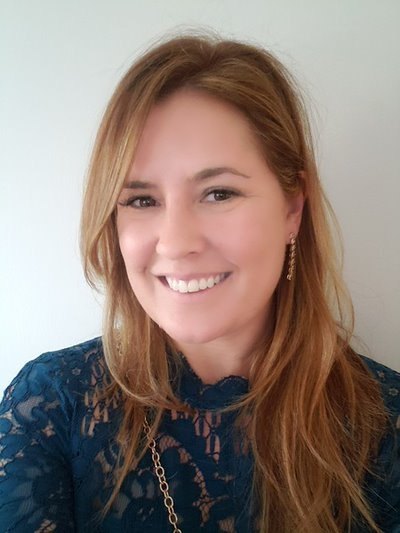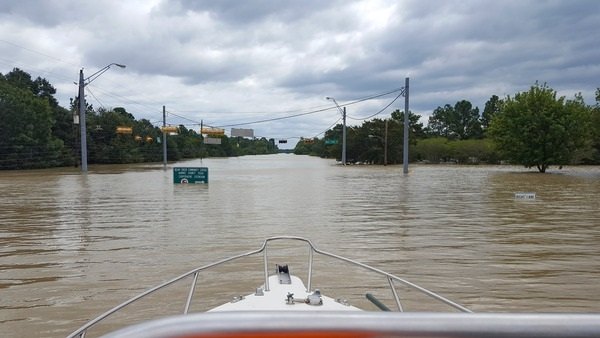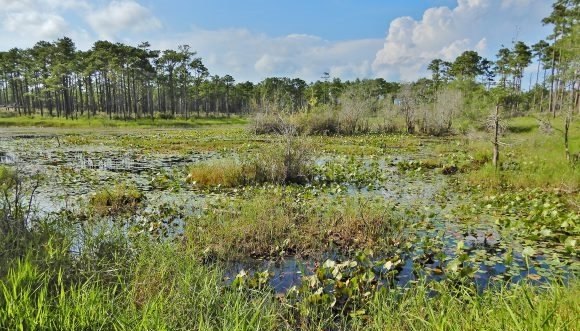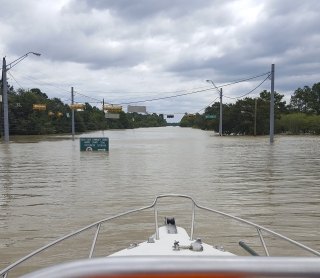
“I got into disaster resilience for the same reason as many people in this industry – I experienced firsthand the destruction of natural disasters in my community when I was young,” said Anne Cabrera, SWCA’s National Disaster and Resilience Director.
Growing up in Miami and Fort Lauderdale, Anne is no stranger to natural disasters. The devastating impact of Hurricane Katrina and Wilma in 2005 shaped her community and her worldview.
Anne’s career path runs parallel to that of the disaster recovery and resilience industry itself. Now leading SWCA’s climate driven services practice focused on preparing for the impacts of climate change, she started her career helping communities with immediate recovery efforts from natural disasters.
Entering the disaster recovery space a couple of years out of college as a billing analyst, Anne worked with local governments to manage grant funding and reimbursement for their recovery efforts. Considering her liberal arts degree, she did not expect it to be a long-term career.
“The tasks associated with being a billing analyst weren’t that interesting to me, but the meaning behind it and my role in helping communities is what drove me,” Anne said.
Evolving in the Industry
As her company grew and evolved, Anne’s career quickly advanced alongside it. She followed her drive to help communities struck by disaster and returned to her alma mater to receive her MBA while working full-time. Promoted to deputy director, Anne managed grant funding for communities across the country struck by some of the largest natural disasters of the last decade.
At this time, the disaster services industry mainly supported reactionary, post-disaster recovery efforts largely due to the accessibility of funding. Money poured in after a disaster, but it was difficult for local governments to receive funding to proactively prepare.
Anne’s projects typically involved working with local governments three to four months post-disaster. However, recovery takes far longer than a few months. Frustrated by seeing the same areas repeatedly struck by disaster, Anne became increasingly interested in working with stakeholders on long-term recovery efforts, disaster preparation, and resilience planning.
In early 2020, Anne joined SWCA to do just that.
Disaster Services at SWCA
“The more I got to know SWCA as an organization and meet the people who work here, the more that I knew that it was the place I wanted to be,” said Anne. “I was really excited to be a part of a company that had the same values and priorities that I have.”
Around this same time, the disaster services industry was also shifting. Congress passed two significant pieces of legislation (October 5, 2018 Disaster Recovery Reform Act (DRRA), and January 1, 2021 Safeguarding Tomorrow through Ongoing Risk Mitigation (STORM) Act) that released federal funding to go toward building resilient communities. Local governments now had a much greater ability to plan and prepare for the increased risk of natural disasters.
In her current role, Anne manages a rapidly growing team of SWCA scientists and technical experts in disaster and climate-driven services, encompassing fire and forestry, ecological restoration, coastal restoration, green engineering, environmental compliance, and more.
There is a large scope of projects covered by these services, including providing carbon sequestration to private landowners, working as a teaming partner with engineering firms on nature-based solutions, and working with communities on fire mitigation efforts.
 Hurricane Harvey aftermath in Houston, TX, photo by SWCA staff Hurricane Harvey aftermath in Houston, TX, photo by SWCA staff
Hurricane Harvey aftermath in Houston, TX, photo by SWCA staff Hurricane Harvey aftermath in Houston, TX, photo by SWCA staffOn one project with the Texas General Land Office (GLO), SWCA supported communities devastated by Hurricane Harvey in one of the most successful recovery efforts to date for disasters of this size. Since 2018, the team of 49 employees has completed over 20,000 restoration projects for single-family and multi-family residences.
 North Carolina wetland North Carolina wetland
North Carolina wetland North Carolina wetlandSWCA was also chosen by North Carolina’s Division of Coastal Management to work with communities on coastal hazard mitigation as part of their N.C. Resilient Coastal Communities Program launch. The program pairs coastal communities with consulting firms and empowers local governments to build their coastal resilience by equipping them with the tools necessary to set goals, assess vulnerabilities, prioritize projects, and apply for funding. Since 2021, SWCA has provided a range of environmental services and technical assistance to four Northeastern communities on this ongoing project.
Looking Ahead
As the disaster services industry evolves, so will SWCA. According to Anne, SWCA continues to focus on growing our established capabilities while also expanding into new areas like climate adaptation planning and hazard mitigation for the cumulative effects of climate change.
“The types of projects that are necessary in our changing world and the solutions our clients are looking for to address their climate challenges is the same type of work we have always done at SWCA,” Anne said. “Our focus on ecological restoration, nature-based solutions, and disaster mitigation are needed at this time more than ever. I am so proud to be part of this team offering sound science and creative solutions to all our clients.”
